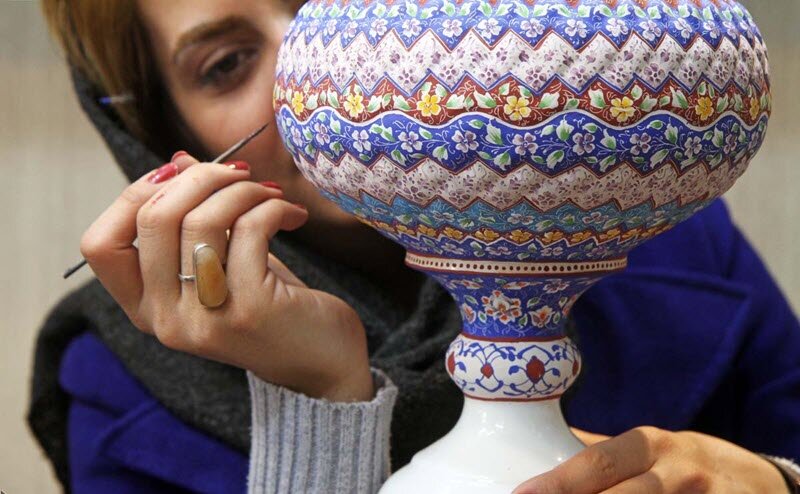Handicrafts exports up 3%, hit $289 million
Tours to Iran’s world craft hubs in the pipeline

TEHRAN - Iran’s handicrafts exports reached $289 million in the past Iranian calendar year 1397 (ended March 20), showing three percent growth year on year, Pouya Mahmoudian, the deputy director of the Cultural Heritage, Handicrafts and Tourism Organization, said on Monday, CHTN reported.
The World Crafts Council - Asia Pacific Region (WCC-APR) has designated seven Iranian cities and villages as world crafts hubs, which are planned to be new destinations for sightseeing tours, the official said, addressing a press conference held on the occasion of the World Handicrafts Day.
Iran globally ranks first in terms of having the highest number of world villages/cities of handicrafts [with China and Chile being the second and third respectively], Mahmoudian said.
In the past year, we managed to succeed in creating 58,357 jobs in handicrafts arena. And significant measures were taken to grant [low-interest] loans in order to create job opportunities in rural areas, she explained.
“The World Handicrafts Day will be commemorated this evening [June 10] in a ceremony to be held in Tehran’s Nejatollahi St. [where is a hub for Iranian handicrafts] and it will be attended by Ghada Hijavi, the head of World Crafts Council-Asia Pacific Region.”
Last October, Abadeh in southern Fars province and Meybod in central Yazd province were respectively named world crafts cities for “Woodcarving” and “Zilou” (traditional hand-woven floor-covering), while the village of Khorashad in eastern South Khorasan province received the same privilege for the craft ‘Toebafi’ (traditional hand-woven fabrics).
Over the past couple of years, the WCC presented the same tags to the cities of Mashhad, Lalejin, Isfahan, and Tabriz and the village of Kalpourgan.
Traditional ceramics, pottery vessels, handwoven cloths as well as personal ornamentations with precious and semi-precious gemstones are among Iranian exports to Iraq, Afghanistan and Germany, the U.S., the UK, and other countries.
Dozens of Iranian handicrafts have gained the UNESCO Seal of Excellence during the past couple of years. Some 75 percent of Iranian handicrafts are produced by females, Masoumeh Ebtekar, vice president for women’s and family affairs, said in April, 2018.
AFM/MQ/MG
